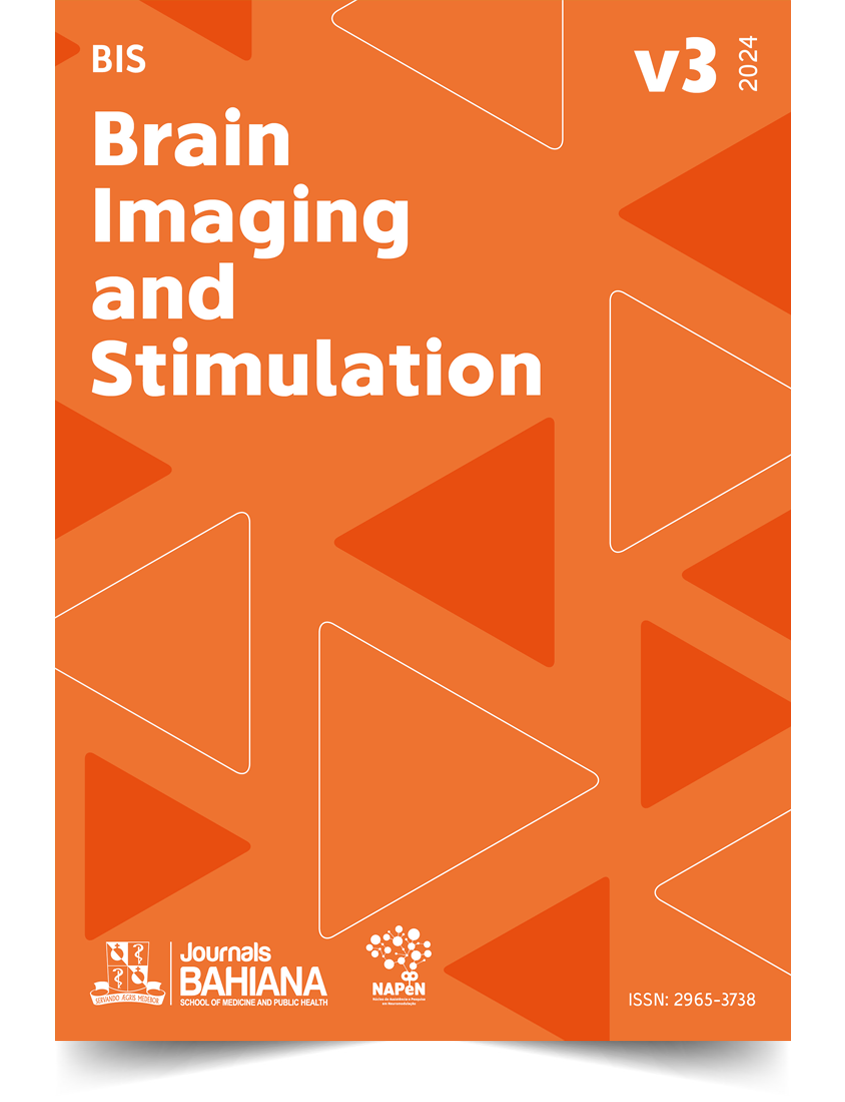Short-term treatment for ataxia due to Syndrome of Irreversible Lithium-Effectuated Neurotoxicity (SILENT) with cerebellar-spinal tDCS: a case report
DOI:
https://doi.org/10.17267/2965-3738bis.2024.e5883Keywords:
SILENT, Ataxia, Cerebellar-spinal tDCS, Physical Therapy, Case ReportAbstract
INTRODUCTION: Syndrome of Irreversible Lithium-Effectuated Neurotoxicity (SILENT) may occur in patients who underwent lithium treatment for bipolar disorder. Unfortunately, SILENT can cause a progressive cerebellar degeneration culminating in permanent cerebellar symptoms as postural instability and ataxic gait. We describe, for the first time, a case of a patient suffering from SILENT whose cerebellar symptoms were treated by transcranial direct current stimulation (tDCS). The objective of the case report is to present the short-term effects of combining tDCS with physical therapy in a patient with ataxia resulting from lithium intoxication. These findings have the potential to be beneficial for both patients and clinicians, as they indicate the possibility of a new therapeutic intervention. METHODS: Patient underwent seven sessions of anodal cerebellar-spinal tDCS (2mA, 20min, fade-in/fade-out: 10 seconds, electrodes of 35 cm2 for the cerebellar area and 48 cm2 for the spinal area) plus 1-hour of daily physical therapy to treat ataxic gait, postural instability, risk of falling and impairment in standing from seated position. Clinical outcomes were assessed by items of the Scale for the Assessment and Rating of Ataxia (SARA) before and immediately after treatment sessions. RESULTS: Patient achieved a large motor improvement mostly perceived by a marked restoration of trunk sway as well as postural control (outstanding the time in standing – without support - increased 655 percent from 20 to 131 seconds; whereas subscores of dysmetria, action/intention tremor, dysdiadochokinesia and gait remained unchanged. CONCLUSION: Anodal cerebellar-spinal tDCS plus physical therapy seems to be a promising therapeutic approach to attenuate cerebellar symptoms of patients who present SILENT, mainly those with deficits in stability and postural control.
Downloads
References
(1) Verdoux H, Debruyne AL, Queuille E, De Leon J. A reappraisal of the role of fever in the occurrence of neurological sequelae following lithium intoxication: a systematic review. Expert Opin Drug Saf. 2021;20(7):827–38. http://dx.doi.org/10.1080/14740338.2021.1912011
(2) Nitsche MA, Paulus W. Excitability changes induced in the human motor cortex by weak transcranial direct current stimulation. J Physiol. 2000;527(3):633–9. http://dx.doi.org/10.1111/j.1469-7793.2000.t01-1-00633.x
(3) Benussi A, Dell’Era V, Cotelli MS, Turla M, Casali C, Padovani A, et al. Long term clinical and neurophysiological effects of cerebellar transcranial direct current stimulation in patients with neurodegenerative ataxia. Brain Stimul. 2017;10(2):242–50. http://dx.doi.org/10.1016/j.brs.2016.11.001
(4) Benussi A, Koch G, Cotelli M, Padovani A, Borroni B. Cerebellar transcranial direct current stimulation in patients with ataxia: A double-blind, randomized, sham-controlled study. Mov Disord. 2015;30(12):1701–5. http://dx.doi.org/10.1002/mds.26356
(5) Benussi A, Dell’Era V, Cantoni V, Bonetta E, Grasso R, Manenti R, et al. Cerebello-spinal tDCS in ataxia: A randomized, double-blind, sham-controlled, crossover trial. Neurology. 2018;91(12):e1090–101. http://dx.doi.org/10.1212/WNL.0000000000006210
(6) Portaro S, Russo M, Bramanti A, Leo A, Billeri L, Manuli A, et al. The role of robotic gait training and tDCS in Friedrich ataxia rehabilitation: A case report. Medicine. 2019;98(8):e14447. http://dx.doi.org/10.1097/MD.0000000000014447
(7) Braga-Neto P, Godeiro-Junior C, Dutra LA, Pedroso JL, Barsottini OGP. Translation and validation into Brazilian version of the Scale of the Assessment and Rating of Ataxia (SARA). Arq Neuropsiquiatr. 2010;68(2):228–30. http://dx.doi.org/10.1590/s0004-282x2010000200014
(8) Rossi FH, Rossi EM, Hoffmann M, Liu W, Cruz RR, Antonovich N, et al. Permanent Cerebellar Degeneration After Acute Hyperthermia with Non-toxic Lithium Levels: a Case Report and Review of Literature. Cerebellum. 2017;16(5-6):973–8. http://dx.doi.org/10.1007/s12311-017-0868-3
(9) Grimaldi G, Argyropoulos GP, Bastian A, Cortes M, Davis NJ, Edwards DJ, et al. Cerebellar Transcranial Direct Current Stimulation (ctDCS): A Novel Approach to Understanding Cerebellar Function in Health and Disease. Neuroscientist. 2016;22(1):83–97. http://dx.doi.org/10.1177/1073858414559409
(10) Cogiamanian F, Ardolino G, Vergari M, Ferrucci R, Ciocca M, Scelzo E, et al. Transcutaneous spinal direct current stimulation. Front Psychiatry. 2012;3:63. http://dx.doi.org/10.3389/fpsyt.2012.00063
(11) Nardone R, Höller Y, Taylor A, Thomschewski A, Orioli A, Frey V, et al. Noninvasive Spinal Cord Stimulation: Technical Aspects and Therapeutic Applications. Neuromodulation. 2015;18(7):580–91. http://dx.doi.org/10.1111/ner.12332
Downloads
Published
Issue
Section
License
Copyright (c) 2024 Déborah Marques, Maíra Souza, Rodrigo Marques, Mayara Barros

This work is licensed under a Creative Commons Attribution 4.0 International License.
This work is licensed under a Creative Commons Attribution 4.0 International License.



